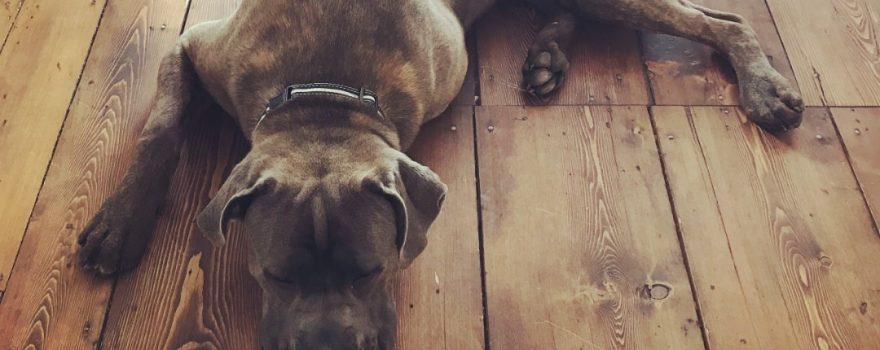Flooring
Asking How to Fill Gaps and Cracks in Hardwood Floors? Read This First!

TL;DR: Gaps and cracks in hardwood floors can be caused by seasonal changes or long-term wear. Before reaching for fillers, determine whether the spacing is temporary—often due to dry winter air—or a permanent issue. For persistent or large gaps, solutions include flexible gap filler, wood strips, or even rope for traditional wide-plank floors. Whatever method you choose, start with a clean surface and use products that allow for wood movement.
Not sure what method is best for your floor? Contact Builders Surplus or call 866-739-1636 for expert help and great deals on hardwood flooring supplies.
Need to know how to fill gaps and cracks in hardwood floors? First make sure your flooring needs the fix.
If you are looking for how to fill gaps and cracks in hardwood floors, there’s a lot you should know about how those gaps got there in the first place. Here we look at hardwood flooring, and how to address flooring fixes when you need them. Read on below!
At Builders Surplus, choose your hardwood flooring from a collection of beautiful, durable wood species including oak, maple, ash, birch, cherry, or walnut. Then select your wood grade, board width, and richly colored finish. Our inventory changes regularly, check it out!
Get in touch to see what Builders Surplus has available at your local store!
Hardwood through the seasons
Nothing comes close to the comfort, warmth, and distinctive style of hardwoods for flooring. Yet it’s important to remember that hardwood flooring is a natural product and it is affected by variations in temperature and humidity. In warm, humid conditions, hardwood can absorb moisture and expand. On the other hand, dry winter weather causes hardwoods to lose moisture and contract, sometimes leading to gaps and cracks between boards.
If you are wondering how to fill gaps and cracks in hardwood floors, first consider whether the separations you are seeing may be due to normal seasonal conditions. You don’t want to fill gaps during winter that are caused by the natural behavior of the wood. It’s actually possible for this to lead to buckling and greater damage when the wood naturally expands come warmer weather.
Instead, you can take steps to reduce ventilation in your home to reduce gapping due to dry winter conditions. If your home is very dry, you may also want to add moisture to the air with a humidifier.
Hardwood over time
There’s no question that hardwood flooring is super durable and lasts for generations. But it can still show its age by getting worn down or gapping. With older tongue-and-groove flooring or even wide-plank floors, gaps will certainly develop between the boards. This mostly has to do with the natural loss of moisture over time.
You might consider waxing your floor as a preventative measure. Waxed floors need to be resurfaced periodically, but are less likely to dry out.
Some cracks really are a problem. They can trap dirt and dust, or become serious trip hazards. The good news is, you can address it.
How to fill gaps and cracks in hardwood floors
If your hardwood floor is showing significant gaps even on the most humid day of summer, you have an issue that needs to be addressed. Now it’s time to ask how to fill gaps and cracks in hardwood floors.
Some simple options include:
Flexible gap fillers – the flexibility allows for swelling boards and the application is simple with a caulk gun. This is a better choice than putty, which can crack and make your problem worse. Be sure to follow manufacturer’s instructions.
Strips of wood – ideally you can cut strips from leftover boards to match your flooring. But if you don’t have leftovers, make sure the wood matches what you have. Use wood glue and tape the strips into gaps with a rubber mallet. Then, sand to the proper height and use matching finish.
Fill with rope – Filling large gaps with natural-fiber rope like jute or cotton is a traditional method (dating back to shipwrights) used on the wide plank floorboards in very old homes. It’s true the rope won’t look like wood, but you can stain it to blend with the floorboards. Wedge rope into place.
With any method, be sure to thoroughly clean out the gaps and cracks in the floor first.
When value’s a must, shop Builders Surplus
Sometimes a floor simply needs to be replaced. You’ll find first-quality flooring at substantial savings at Builders Surplus. Stop by your nearby store today. Our knowledgeable associates are glad to answer any questions you have about your home-improvement projects.
Get in touch!
FAQs: Filling Gaps in Hardwood Floors
Q: Why do gaps form in hardwood floors?
A: Gaps usually appear due to seasonal humidity changes—wood contracts in dry conditions and expands in humid weather. Long-term drying or aging can also cause permanent gaps.
Q: Should I fill gaps during winter?
A: Not unless you’re sure the gaps are permanent. Filling gaps caused by winter dryness can lead to buckling when the wood expands in summer.
Q: How do I know if a gap is permanent?
A: If gaps remain even during humid summer months, they’re likely permanent and may need filling.
Q: What are the best ways to fill gaps in hardwood floors?
A: Common solutions include:
-
Flexible gap filler (like floor-safe caulk)
-
Wood strips cut to size and glued in place
-
Natural-fiber rope for wide plank floors (can be stained to match)
Q: Is wood putty a good option?
A: Not usually. Wood putty can crack and doesn’t flex with seasonal movement. Opt for flexible fillers or wood strips instead.
Q: Can gaps be a safety issue?
A: Yes, large or uneven gaps can collect debris or become trip hazards. Addressing them improves both appearance and safety.
Photo by Léonie Beaudet-Dubois on Unsplash
